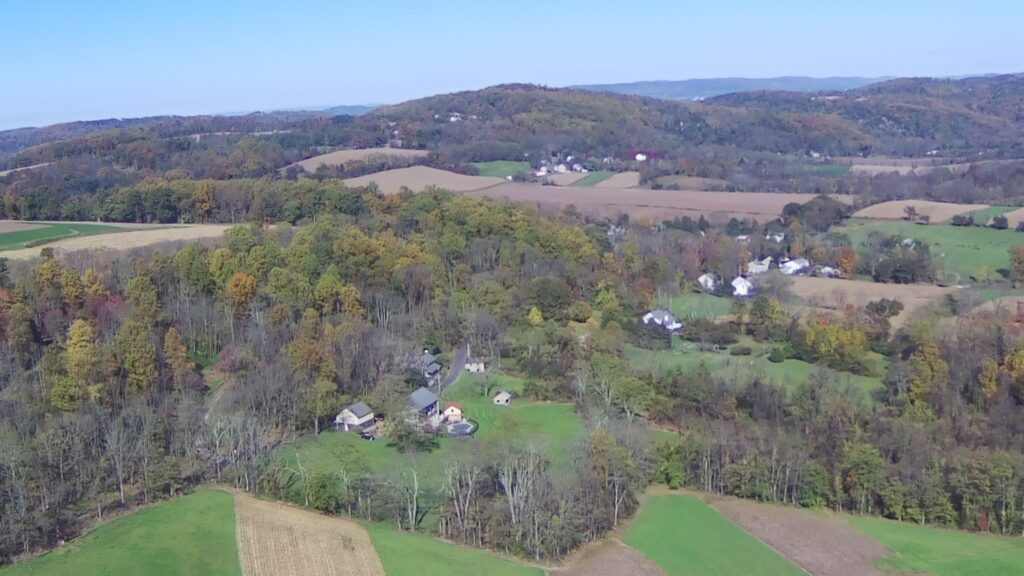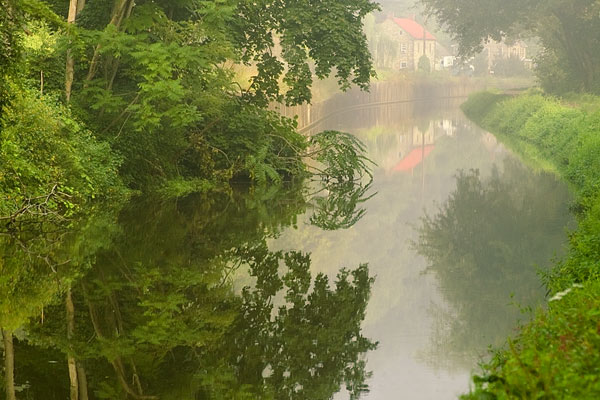Durham today is home to established farms and residential houses in a quiet rural setting. Many houses around the township date to the 19th century or earlier. Within Durham Village are houses still used as dwellings, a former store of historical significance (now a private residence), and a village green used for community occasions. Commercial operations today along Rte. 611 include a farm market, bank branch, two restaurants, antique store, and gas station. A few skilled tradesmen have workshops near their homes.
Durham village rose in the early 1700s around an early iron furnace operation, fed with iron ore mined from the nearby hills. In the village center, on the foundations of the old iron furnace, is a large gristmill (built 1820) which has remained unchanged, except for an add-on section, since it was built. Much of the original gristmill machinery remains intact inside the structure. The mill, a registered historic property, ceased operation in 1967, and is now owned by the Township. The Durham Historical Society has its office in the mill building, along with the local U.S. Post Office.
The Delaware River marks the township’s eastern boundary with New Jersey on the other side. Running by the river is the local stretch of the Delaware River Canal, formerly used by mule-drawn canal boats carrying river freight from Easton to Bristol, near Philadelphia.




